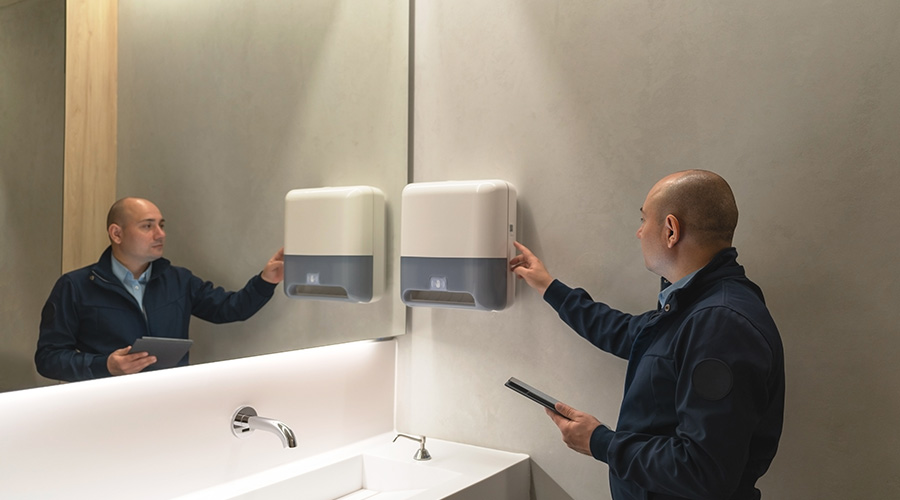Drain Cleaning: Understanding Facility Needs
Maintenance and engineering managers in commercial and institutional facilities face a common challenge related to drain cleaning: specifying the most appropriate equipment to enable front-line technicians to effectively diagnose and remove blockages in drains and piping systems.
The specific needs of each K-12, higher education and health care facility are different, so matching those needs to available technology options adds another layer to the specification challenge. By tapping into the knowledge of manufacturers of drain cleaning products, managers can gain a better perspective on drain-cleaning products that are most appropriate for their facilities' needs.
"The frequency of cleaning drains impacts what you will purchase," says James McGregor of Ridgid. "You are not going to make a big investment in an earth mover if you are only going to use it once. If they are going to do (drain cleaning) themselves, that's one thing. If they get in trouble they can call the local guy who has bigger systems who can solve the problem."
Understanding Challenges
While the age of a facility's piping system has a dramatic impact on the way technicians carry out drain cleaning tasks, it generally has little effect on the products managers specify.
"As long as the plumbing is still functional, our machines should still work, and our devices should still work depending on exactly what technicians are trying to clear," says David Dunbar of General Pipe Cleaners. "One big exception would be about 20 or so years ago when we started switching to low-volume flush toilets. Those toilets have a much smaller back end to them. The passage, the drain from the back end, is much smaller."
The kind of pipes, and their condition, inside a facility is a more important factor in what products to consider for purchase.
"For instance, you have a clay tile pipe or cast-iron pipes, you can get roots in those pipes," says Joe Schaeper of Ridgid. "That, in turn would affect your product decision. The size of the lines would be an important part of it too."
Keeping accurate, up-to-date records on the inspection and maintenance of a facility's drain systems is essential to ensure that the systems continue to function in supporting operations.
"In this day and age, systems within professionally managed facilities need to be clearly documented and revised as necessary for the purpose of preventive maintenance and in the case of failure of function at any location in the drain system," says Steve McLaughlin of PCI Inc. "I would document the drain system and condition all the way to the street connection.
"With the knowledge of drain line location and access points, new and old materials and current system conditions, maintenance engineers can develop efficient plans to address ongoing preventive maintenance requirements, as well as emergency and non-emergency corrective action plans."
Related Topics:













